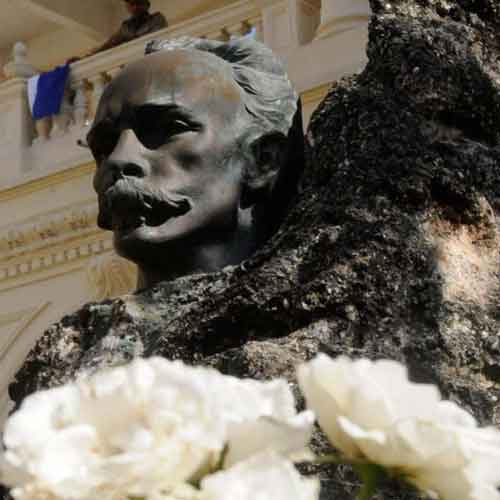
There is much talk about José Martí these days in Cuba, not only because it is January and the calendar refers to 28, 167 years ago, in Havana's Paula Street.
Las Tunas.- It is spoken about El Maestro with verve also because certain “clandestine group”, who are never so much, decided to open the calendar spreading red on José Martí busts in the capital of the country. Then, we all jump. On one hand, those who love and found; on the other, those who hate and destroy.
Worthy Cubans know that "they messed with the noblest of all Cubans" and we have galloped. Both stomping on verve for “radical changes” and carrying his line for "resistance and continuity." Because Martí, the vital spring of this Revolution, is a bit of each one of us and we read it from our vision of the world.
Personally, I consider too naive the attitude of those who claim that calling for violent acts to the people of Cuba, the “changes” that they have been sitting for six decades ago to take place. Moreover, it seems even more naive to me that those who continue to assume violence as the way use nothing less than the Apostle in the snatch.
A man who organized a war, but whose figure usually appears in our imaginary separated from the bullets and associated with the idea of good, equality, peace, culture, freedom, justice. A human being away from masks, and who said what he had to at his time, without parade.
In addition, there are those who consider, and they are not few, that it is very easy to tell "the Cubans of the Island" to go out to the streets to break and stain the sites that they did not damage while they walked "the corners of the dictatorship". Besides, the ones that call “the combat of a soy hash” that they do not eat either. Of course, Cuba is loved, I know, from anywhere in the world.
The truth is that, accustomed as we are to turn setbacks into victories, we must get together and take advantage of the dilemma to grow. Precisely, these words are related to the previous statement. If something has become clear to me between so much bustle, it is that the children of Cuba have a deep-rooted assurance that José Martí is more than January 28, May 19 and the National Hero. He cannot be limited to sizes or visions.
It would be very good to take advantage of the questions of the youngest in the midst of this context to raise awareness of the profound Martí ideology. To explain why he is indispensable in the history of this country, and propose a real approach to José Julián, one that escapes from pre-established formulas and helps everyone to support themselves from their own springs.
I say this because I think that Martí is an intimate learning. Perhaps, because I know those who have retraced all levels of education, all possible chairs and do not go beyond mere historical knowledge. In addition to his murky root, this circumstance has put the Master at the epicenter of the debates of the Greater Antilles.
It is not that he was not before, but between quotes of relief, vandalism and ardor, there is more to talk of the Hombre de Dos Ríos, we look more in his enigmas.
It is an excellent opportunity for us to get together to clean the busts that are scattered in the most unexpected spaces. Sometimes with weed around and damaged paint. The same can be an excuse for the budget of Plaza Martiana de Las Tunas to grow and then re-dial the solar clock and the gnomon ceases to be a truncated piece, in the middle of such a work of art.
We talk about José Martí. An exceptional human being who taught us how much he honors the act of honor. Besides, how we should always walk in a tight step, "like silver in the roots of the Andes." It was not an ordinary teaching; it is valid now and for all time.






